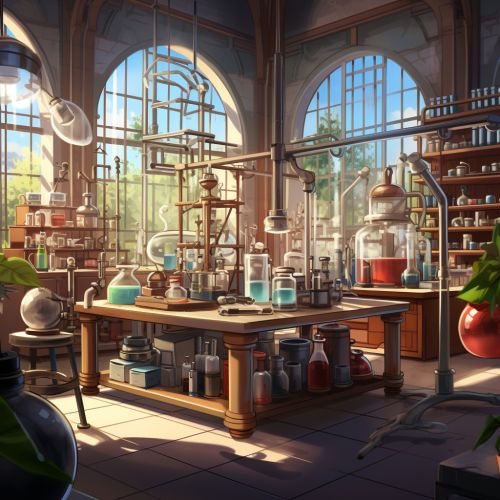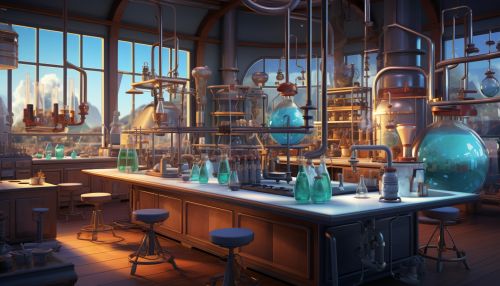Biosynthesis of Natural Product Pharmaceuticals
Introduction
Biosynthesis of natural product pharmaceuticals refers to the process by which living organisms, such as plants, animals, and microorganisms, produce complex organic compounds that are used in the production of pharmaceutical drugs. These compounds, known as natural products, have been the source of many of the active ingredients in medicines for centuries, and continue to play a vital role in drug discovery and development today.


Biosynthesis of Natural Products
Biosynthesis is a multi-step, enzyme-catalyzed process where substrates are converted into more complex products in living organisms. In biosynthesis, simple compounds are modified, converted into other compounds, or joined together to form macromolecules. This process often involves the reduction of covalent chemical bonds.
The biosynthesis of natural products occurs through metabolic pathways. These pathways involve a series of chemical reactions that lead to the formation of the desired product. The reactions are catalyzed by enzymes, which are proteins that speed up the chemical reactions without being consumed in the process.
Biosynthetic Pathways
The biosynthetic pathways of natural products can be divided into primary and secondary pathways. The primary pathways are common to all cells and lead to the formation of basic cellular components such as amino acids, nucleotides, and fatty acids. The secondary pathways, on the other hand, are not essential for cell survival but produce specialized metabolites that serve specific functions for the organism. These secondary metabolites are often the natural products used in pharmaceuticals.
Primary Biosynthetic Pathways
Primary biosynthetic pathways involve the synthesis of basic cellular components. These include the synthesis of amino acids, nucleotides, and fatty acids.
Amino acids are the building blocks of proteins and are synthesized from simple precursors such as glucose and ammonia. The biosynthesis of amino acids involves the formation of a carbon skeleton, followed by the addition of an amino group.
Nucleotides, the building blocks of DNA and RNA, are synthesized from amino acids, ribose-5-phosphate, and CO2. The biosynthesis of nucleotides involves a series of reactions that lead to the formation of the purine or pyrimidine ring, followed by the attachment of the ribose sugar and one or more phosphate groups.
Fatty acids are synthesized from acetyl-CoA and malonyl-CoA. The biosynthesis of fatty acids involves the sequential addition of two-carbon units to a growing fatty acid chain.
Secondary Biosynthetic Pathways
Secondary biosynthetic pathways produce specialized metabolites that serve specific functions for the organism. These metabolites, often referred to as secondary metabolites, are often the natural products used in pharmaceuticals.
Secondary metabolites can be classified into three major groups: terpenes, phenolics, and alkaloids.
Terpenes are synthesized from isoprene units and include compounds such as steroids and carotenoids. Phenolics are synthesized from shikimic acid or malonic acid and include compounds such as flavonoids and tannins. Alkaloids are synthesized from amino acids and include compounds such as morphine and quinine.
Biosynthesis of Natural Product Pharmaceuticals
Natural product pharmaceuticals are drugs that are derived from natural products. The biosynthesis of these drugs involves the extraction and purification of the active ingredients from the natural source, followed by chemical modification to improve their therapeutic properties.
The biosynthesis of natural product pharmaceuticals can be divided into three main steps: extraction, purification, and chemical modification.
Extraction
The first step in the biosynthesis of natural product pharmaceuticals is the extraction of the active ingredients from the natural source. This is typically done using a solvent such as ethanol or water, which dissolves the active ingredients and allows them to be separated from the rest of the plant material.
Purification
Once the active ingredients have been extracted, they must be purified to remove any impurities. This is typically done using techniques such as chromatography or crystallization.
Chemical Modification
After the active ingredients have been purified, they may be chemically modified to improve their therapeutic properties. This can involve changing the structure of the molecule to increase its potency, reduce its toxicity, or improve its pharmacokinetic properties.
Applications of Natural Product Pharmaceuticals
Natural product pharmaceuticals have a wide range of applications in medicine. They are used in the treatment of a variety of diseases, including cancer, infectious diseases, and neurological disorders.
For example, the drug paclitaxel, which is used in the treatment of various types of cancer, is derived from the bark of the Pacific yew tree. Another example is the drug artemisinin, which is used in the treatment of malaria, is derived from the sweet wormwood plant.
Challenges and Future Directions
Despite the many advantages of natural product pharmaceuticals, there are also several challenges associated with their use. These include the difficulty of sourcing the natural products, the complexity of the biosynthetic pathways, and the need for sustainable production methods.
Future research in the field of natural product pharmaceuticals is likely to focus on overcoming these challenges. This could involve the development of new extraction and purification techniques, the use of genetic engineering to enhance the production of natural products, and the exploration of new sources of natural products, such as marine organisms or microorganisms.
